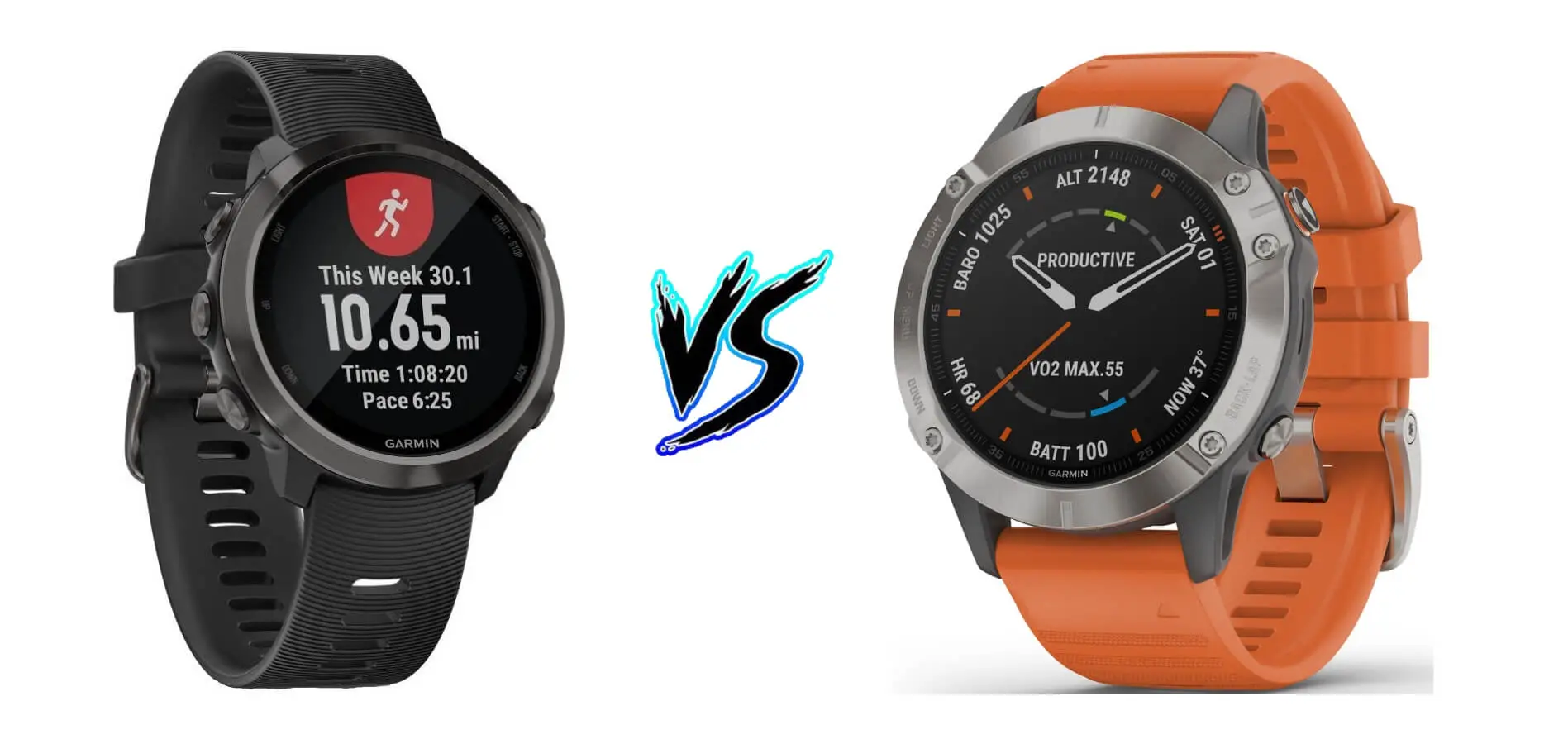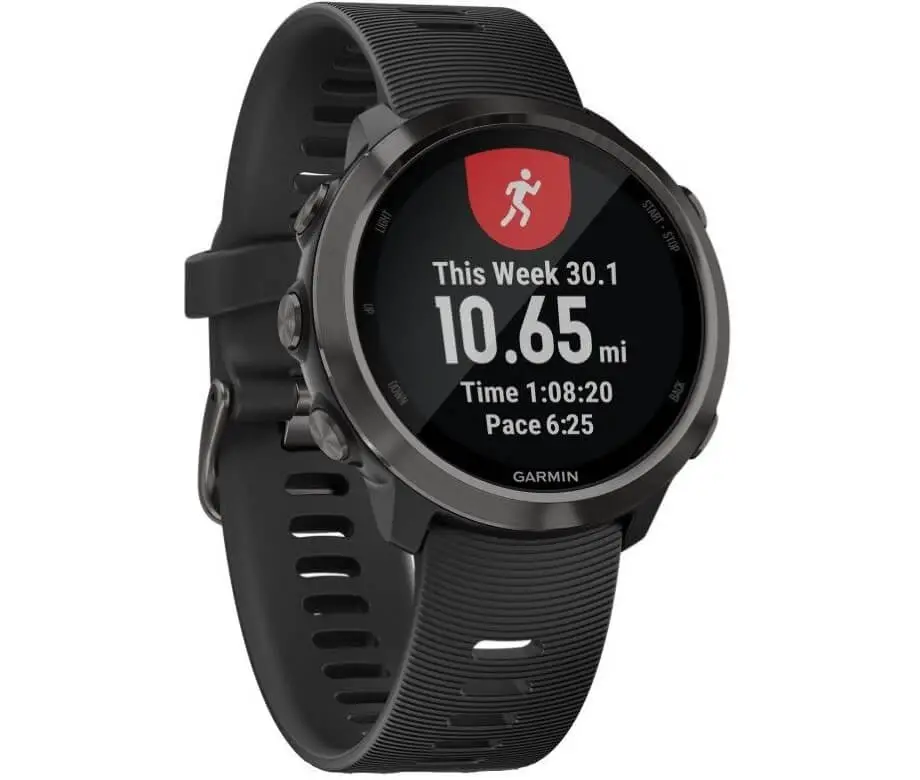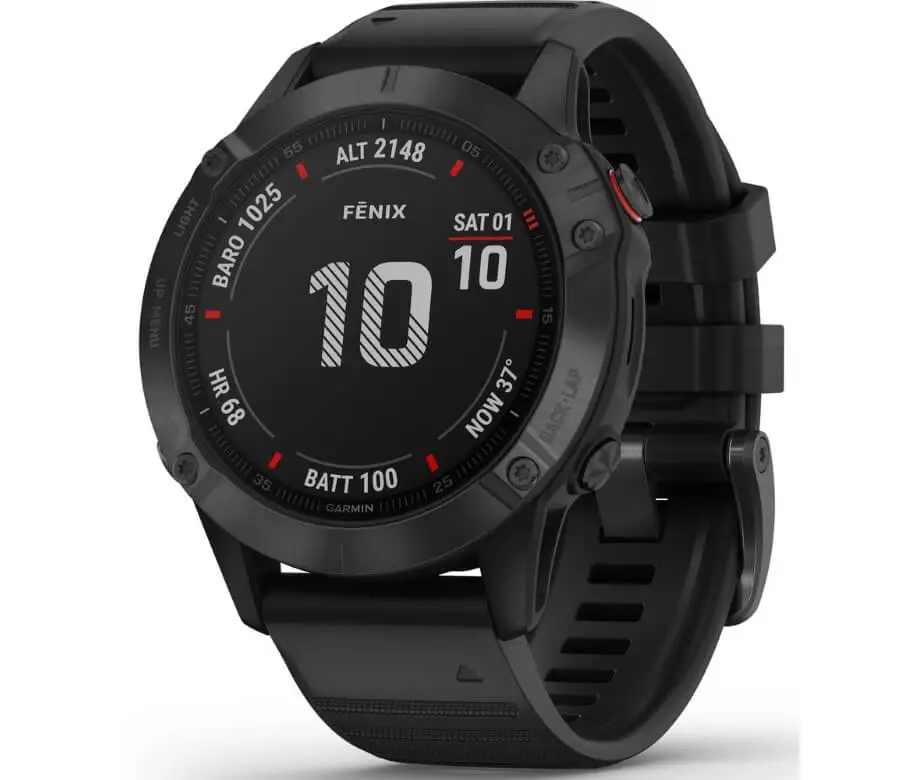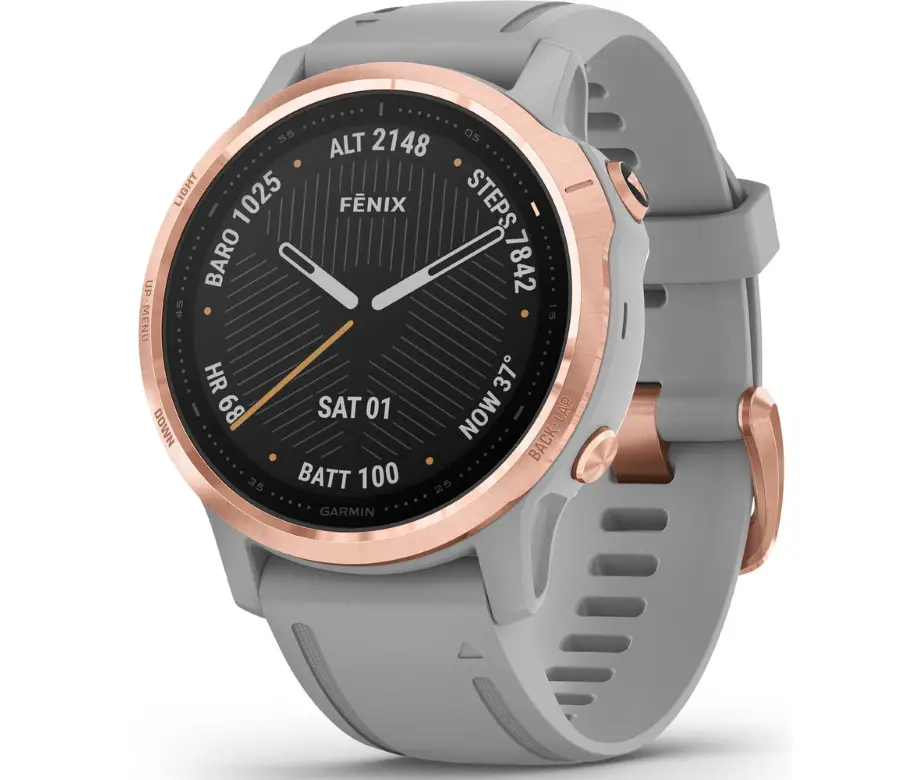The Garmin Forerunner 645 is a premium GPS running watch,with a nice variety of sports modes and a decent number of smart features.
The Garmin Fenix 6 Pro/Sapphire is basically the cream of Garmin’s crop, boasting triathlon capabilities, navigation technology, over 30 sports modes and all the smart features that Garmin has to offer.
But the question here is whether or not you actually need all the extra features packed into the Fenix 6. To help you make a decision, we are going to unpack all the key differences and all the key similarities between these two watches. We will also provide a few basic recommendations at the end of the article.
Let’s dive in.
What are the main differences between the Forerunner 645 and the Fenix 6?
- Underwater Wrist-HRM: The Fenix 6 can measure your heart rate underwater without a chest strap. The FR645 can’t.
- Pulse Oximeter: The Fenix 6 Pro has a pulse oximeter built-in. This allows the watch to measure your blood oxygen levels.
- Body Battery Score: This is a holistic stat which combines your heart rate data, training data, sleep levels and stress levels into one overarching metric called your body battery score. Only the Fenix 6 offers support for this.
- Garmin PacePro (Fenix 6 Only)- The whole point of PacePro is to help you adjust your pace during the uphill sections of a race. It basically preplans your ideal pace for each and every stretch of the route. This can be a gamechanger for people chasing PB’s on challenging routes.
- Navigation Technology (TOPO Maps): The Fenix 6 gives you access to detailed topographical maps, wherever you are in the world. This is particularly great for hiking, trail running and mountain biking.
- Triathlon Capabilities – This is arguably the biggest difference between the FR645 and the Fenix 6. Simply put, the Fenix 6 has a triathlon mode. The Forerunner 645 does not.
- More Sports Modes: The Fenix 6 supports 11 additional sports modes, including Golf, Open Water Swimming and Triathlons.
- 4 Times As Much Music Storage – The Forerunner 645 can store up to 500 songs. The Fenix 6 Pro can store up to 4000 songs.
- Battery Life: The GPS battery life of the Fenix 6 Pro (36 Hours) is almost 3 times longer than the GPS battery life of the FR645 (14 Hours).
- Solar Charging from Watch Face: There are two versions of the Fenix 6 which support solar charging. This might seem like a big deal, but it actually isn’t the most practical benefit, because the battery life benefits from solar charging are almost negligible.
Forerunner 645 vs Garmin Fenix 6 Pro - Key Similarities
Garmin Forerunner 645
Fenix 6 Pro/Sapphire
Stryd + RunScribe
Stryd + RunScribe
FR645 vs Fenix 6 Pro - Key Differences
Garmin FR645
Fenix 6 Pro/Sapphire
Less Expensive
More Expensive
240 x 240 pixels
260 x 260 pixels
Corning® Gorilla® Glass 3
Corning® Gorilla® Glass DX or Sapphire Crystal
1.2" (30.4 mm) diameter
1.3” (33.02 mm) diameter
Up to 500 Songs
Up to 2000 Songs
72 Hours
150 Hours
48 Days
Fenix 6X Pro Solar Only
14 hours
36 Hours
5 hours
10 hours
Up to 7 Days
Up to 14 Days
19
30
Comparison of Sports Modes
| Forerunner 645 Sports Modes | Fenix 6 Pro - Sports Modes |
|---|---|
| 01) Strength Training | 01) Strength Training |
| 02) Cardio Training | 02) Cardio Training |
| 03) Elliptical Training | 03) Elliptical Training |
| 04) Stair Stepping | 04) Stair Stepping |
| 05) Floor Climbing | 05) Floor Climbing |
| 06) Indoor Rowing | 06) Indoor Rowing |
| 07) Yoga | 07) Yoga |
| 08) Running | 08) Running |
| 09) Treadmill Running | 09) Treadmill Running |
| 10) Indoor Track Running | 10) Indoor Track Running |
| 11) Skiing | 11) Skiing |
| 12) Snowboarding | 12) Snowboarding |
| 13) Cross Country Skiing | 13) Cross Country Skiing |
| 14) Stand Up Paddleboarding | 14) Stand Up Paddleboarding |
| 15) Rowing | 15) Rowing |
| 16) Cycling | 16) Cycling |
| 17) Indoor Cycling | 17) Indoor Cycling |
| 18) Pool Swimming | 18) Pool Swimming |
| 19) Walking | 19) Walking |
| 20) Golf Mode | |
| 21) Open Water Swimming | |
| 22) Triathlon Mode | |
| 23) Tactical | |
| 24) Jumpmaster | |
| 25) Kayaking | |
| 26) Mountain Biking | |
| 27) Swimming/Running | |
| 28) Climbing | |
| 29) Trail Running | |
| 30) Indoor Track Running |
Main Reasons To Choose the Forerunner 645

The FR645 Is Significantly Cheaper
The Forerunner 645 generally sells for about 50% less than the Fenix 6, depending on which version of the Fenix 6 you choose. Perhaps more importantly, you need to ask yourself if you truly need all the extra features packed into the Fenix 6.
If you’re a triathlete, you would definitely be better served by the Fenix 6 or the Forerunner 945. However, if you’re more of a running specialist that also dabbles in some other sports, you need to give strong consideration to the Forerunner 645.
It's a very good choice for running specialists
From a running perspective, the Forerunner 645 can go toe-to-toe with the Fenix 6. There are a few reasons for this.
1 – The FR645 and the Fenix 6 both have barometric altimeters: This means that they are both good at measuring vertical changes during your run, using a combination of GPS data and changes in atmospheric pressure measured by the barometric altimeter.
2 – The FR645 and the Fenix 6 Support Garmin Running Power: In essence, the Forerunner 645 is the only mid-range Garmin watch that supports Garmin running power. Also, it’s worth reamphasizing that both watches also offer support for Stryd and RunScribe+.
3 – The FR645 and the Fenix 6 Support Advanced Running Dynamics: This quite literally opens up the following running specific metrics:
- Ground Contact Time – The time your foot spends on the ground with each stride.
- Ground Contact Balance – Symmetry between left and right foot when running.
- Vertical Oscillation – The amount of ‘bounce’ in your running motion. Reducing the amount of bounce in your stride can improve your running efficiency/economy.
- Vertical Ratio – the cost-benefit ratio with stride length. This stat can help you find the ideal stride length for setting new a PB, in any distance.
- Cadence – Real time cadence metrics, displayed on your watch
- Stride Length – Real time stride length data, displayed on your watch
It has a good amount of sports modes
Obviously the Forerunner 645 doesn’t have as many sports modes as the Fenix 6. However, it still boasts support for: running, cycling, pool swimming, rowing and a bunch of other sports.
In other words, most people will be well covered by the sports and activity modes offered by the Forerunner 645. It’s really just golfers and triathletes that might not find what they’re looking for if they choose the FR645.
Main Reasons To Choose the Fenix 6 Pro/Sapphire
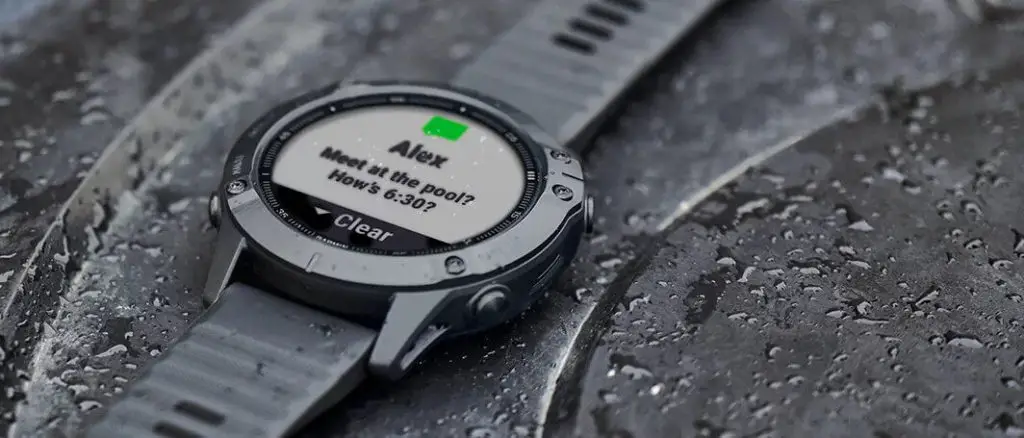
You Do Triathlons & You Need Open Water Swimming
This could definitely be a deal breaker for endurance athletes. If you enjoy participating in triathlons, it makes sense to go for the Fenix 6 rather than the Forerunner 645.
By option for the Fenix 6, you get access to open water swimming and multisport mode, which allows you to track all the difference disciplines of a triathlon. It’s also worth mentioning that switching between each discipline is super easy. You literally just need to push one button to change between swimming, running and cycling. Also, you can also use the mulitsport mode for duathlons as well.
You Play Golf Regularly
The Fenix 6 pretty much has all the key features that you would find in a dedicated GPS golf watch. To be more specific, with the Fenix 6 Pro and Fenix 6 Sapphire you get:
- 41 000 pre-loaded golf course maps
- Yardage to front, middle and back of green
- Yardage to hazards like bunkers and water areas
- Automatic shot distance tracking
- The ability to view the shape of the green, and manually set the pin position
- Digital scorecard
You Enjoy Skiing or Snowboarding
Like the golf maps mentioned earlier, the Fenix 6 Pro/Sapphire also comes pre-loaded with 2000 ski resort maps. This can make it easier to navigate your way around unfamiliar ski resorts if you don’t have an instructor with you.
The Fenix 6 Pro also tells you the slope ratings of all the different routes in your resort. Naturally, it’s quite comforting to know how to avoid red and black slopes if you’re still a beginner or you don’t like steep tracks.
All this being said, the Forerunner 645 also supports skiing, snowboarding and backcountry skiing. From a snowsports perspective, the key difference is the SKI maps, which are limited to the Fenix 6 Pro.
You Want TOPO Maps
The topographical map technology packed into the Fenix 6 Pro is one of its top selling points. You literally get a 3D representation of the surrounding terrain, with all the contours and peaks accurately represented.
This is especially useful for hiking and mountaineering. You can use the TOPO maps to help you navigate through unfamiliar mountainous terrain.
Underwater Wrist-HRM + Pulse Oximeter
This is another key difference between the Forerunner 645 and the Fenix 6. Because the Fenix 6 is built with Garmin’s V3 elevate optical heart rate monitor, you essentially gain access to:
1 – Underwater Optical Heart Rate Measurements: Gone are the days of relying exclusively on chest straps to measure your heart rate underwater. This has now become a stock standard feature for all Garmin units built with the V3 HRM.
2 – Pulse Oximeter: The purpose of the Pulse Ox is to measure your blood oxygen levels. This is used to assess how well your body has adjusted to higher altitude conditions. It can also be use to help assess your overall stress levels.
Body Battery Score
The Forerunner 645 was released just before body battery score became a standard feature for Garmin watches and activity trackers.
In case you aren’t familiar with Garmin’s body battery score technology, it’s basically an overarching metric which combines your heart rate data, training data, sleep levels and stress levels into a single metric called your Body Battery.
Garmin PacePro + Garmin ClimbPro
Garmin PacePro: The whole point of Garmin’s PacePro technology is to help keep you on target pace with grade-adjusted guidance as you run a course. In other words, Garmin PacePro calculates the speed impact of hills, while giving you the target pace for every stage of the race, in real time.
Garmin ClimbPro: The main benefit of Garmin’s ClimbPro technology is that it allows you to to see real-time information on your current and upcoming climbs, including gradient, distance and elevation gain. It is particularly useful for mountain biking and trail running. In essence, you will know what to expect during each phase of the race, and can plan your pacing strategy accordingly.
Temperature And Altitude Acclimation
Temperature Acclimation – If you’ve ever trained in extremely hot conditions, you will instinctively know how draining it can be. Fortunately, the Fenix 6 quite literally factors extreme temperature conditions into your training schedule, and predicted race times. It basically allows you to assess how extremely hot or extremely cold conditions will impact your training session or race day performance.
Altitude Acclimation – In principle, this feature is very similar to temperature acclimation (mentioned above) except it looks at how altitude may affect your training and race day performance. This feature can also be used to assess your blood oxygen levels and how safe it is for you to continue ascending when you up moutainous terrain, when you are extremely high above sea level.
You want everything that Garmin has to offer
Simply put, the Fenix 6 Pro and the Fenix 6 Sapphire are built with pretty much every technological feature that Garmin has to offer.
You are literally getting the most advanced multisport GPS watch that money can buy right now. It might be expensive, but we think it’s safe to say you get what you pay for.
Final Thoughts
In the end, it may come down to this.
Choose the Forerunner 645 if:
- You’re on a tight budget
- You’re a running specialist
- You don’t do triathlons
Choose the Fenix 6 Pro if:
- You do triathlons
- You play golf regularly
- You enjoy snowsports like skiing and snowboarding
- You will actually use the TOPO map technology
- You want the Pulse Oximeter and Body Battery score
- You want all the features that Garmin has to offer

